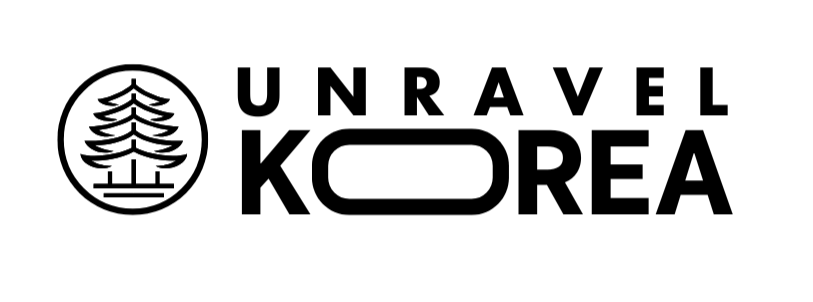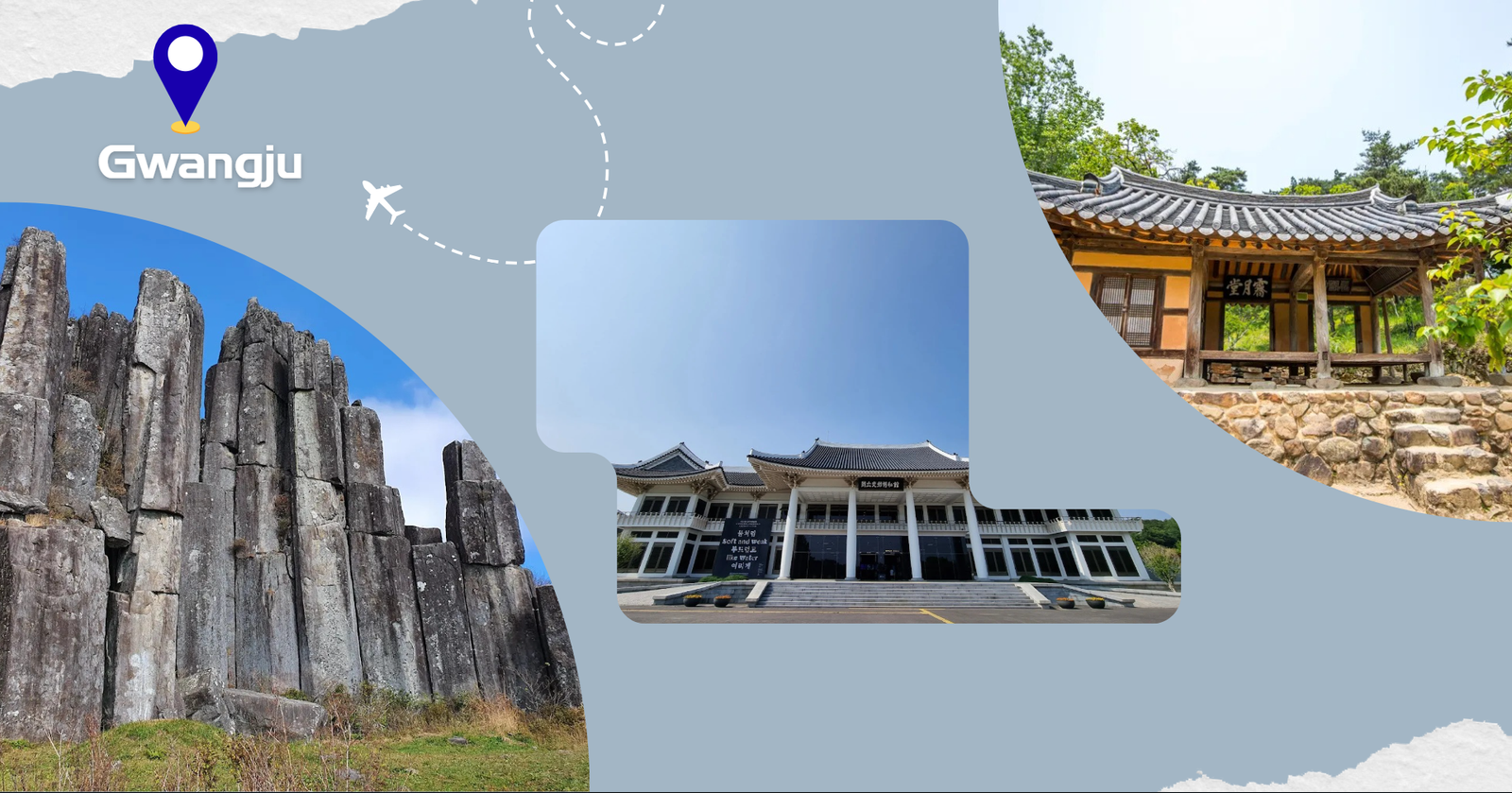Gwangju, South Korea’s sixth-largest city, is located in the southwestern Jeolla province, about 270 kilometers south of Seoul. Known as the “City of Light” and celebrated for its art, culture, and democracy movement history, Gwangju offers travelers an authentic Korean experience with world-class museums, stunning natural parks, historical sites, and delicious local cuisine. The city has a progressive spirit and is famous for its contemporary art scene, democratic activism heritage, and some of Korea’s best food.
Getting to Gwangju
From Seoul: KTX train (1.5-2 hours), express bus (3.5 hours), or domestic flight (1 hour)
From Busan: KTX train (2 hours) or express bus (2.5-3 hours)
By Air: Gwangju Airport offers domestic flights and some international connections
Getting Around: Gwangju Metro (single line running north-south), extensive bus network, taxis readily available
Top Things to Do in Gwangju
1. Mudeungsan National Park (무등산국립공원)
One of Korea’s most beloved national parks, Mudeungsan offers spectacular hiking with unique rock formations and panoramic views of Gwangju city.
What to See & Do:
- Hike to Cheonwang-bong Peak (1,187m) – the main summit with breathtaking views
- Visit the stunning Seoseokdae and Ipseokdae rock formations (towering columnar jointing rocks)
- Explore Jeungsimsa Temple, a historic Buddhist temple along the trail
- Walk various trails ranging from beginner to advanced (well-marked paths)
- Enjoy spectacular autumn foliage (the park is famous for fall colors)
- Experience mountain temple culture and traditional Korean mountain cuisine at park entrance restaurants
- Take photos of the unique geological rock columns
- Visit in winter for snow-covered mountain scenery
Practical Info:
- Location: Just 30 minutes by bus from central Gwangju
- Hours: Open 24/7 (though recommended to hike during daylight)
- Admission: Free
- Time needed: 4-6 hours for main peak hike; 2-3 hours for shorter trails
- Popular trail: Mudeungsan – Seoseokdae – Jeungsimsa (7.2 miles with 3,323 ft elevation gain)
- Best time: Spring for cherry blossoms, fall for autumn colors (especially popular)
- Difficulty: Moderate to challenging depending on route
- Getting there: City buses 1187 or 1187-1 from Chungjangro; buses run every 20-30 minutes
- Facilities: Hiking gear shops, restaurants, rest areas at park entrances
2. Gwangju National Museum (국립광주박물관)
The premier museum in southwestern Korea, showcasing the region’s rich cultural heritage from prehistoric times through the Joseon Dynasty.
What to See & Do:
- Explore extensive celadon pottery collections (Goryeo Dynasty’s famous green ceramics)
- View Buddhist art and artifacts from regional temples
- Learn about ancient Jeolla region kingdoms and cultures
- See the Sinan Shipwreck treasure collection (recovered from a 14th-century Chinese trading vessel)
- Visit special exhibitions on Korean art and history
- Walk through beautifully landscaped museum grounds
- Attend cultural programs and workshops (check schedule)
- Enjoy the peaceful atmosphere and modern architecture
Practical Info:
- Location: Haseo-dong, Buk-gu, Gwangju
- Hours: Tuesday-Sunday, 9:00 AM – 6:00 PM (closed Mondays and January 1)
- Admission: Free
- Time needed: 2-3 hours
- Best for: History enthusiasts, art lovers, families
- Facilities: Café, museum shop, children’s education center, parking
- Languages: Korean with some English signage; audio guides may be available
- Getting there: Metro to Nokdong Station + bus or taxi; multiple bus routes
3. Gwangju National Science Museum (국립광주과학관)
A modern, interactive science museum perfect for families and anyone interested in science and technology, featuring hands-on exhibits and educational programs.
What to See & Do:
- Experience interactive science exhibits covering physics, chemistry, biology, and technology
- Visit the planetarium for immersive astronomy shows
- Explore the children’s science zone with age-appropriate activities
- Watch science demonstrations and experiments
- Learn about Korean contributions to science and technology
- Participate in hands-on workshops and experiments
- Visit outdoor science exhibits and installations
- Enjoy educational films in the science theater
Practical Info:
- Location: Buk-gu, Gwangju
- Hours: Tuesday-Sunday, 9:30 AM – 5:30 PM (closed Mondays)
- Admission: Adults around 4,000 KRW; reduced rates for students and children; planetarium has separate fee
- Time needed: 3-4 hours (especially with children)
- Best for: Families with children, science enthusiasts, educational visits
- Languages: Primarily Korean; some English available
- Facilities: Café, gift shop, parking, wheelchair accessible
- Getting there: Bus from city center; taxi recommended (about 20 minutes from downtown)
4. Gwangju World Cup Stadium (광주월드컵경기장)
Built for the 2002 FIFA World Cup, this impressive stadium showcases unique architecture and hosts sporting events and concerts.
What to See & Do:
- Tour the stadium facilities and learn about 2002 World Cup history
- Attend K League football matches (Gwangju FC home games)
- Visit during concerts and special events
- Photograph the stadium’s distinctive design
- Explore the surrounding sports complex with walking paths
- Visit nearby Gwangju Family Land amusement park
- Enjoy the stadium’s modern architecture and facilities
Practical Info:
- Location: Pungam-dong, Seo-gu, Gwangju
- Stadium tours: Available on non-event days (check schedule and book in advance)
- Match tickets: Available online or at stadium box office for K League games
- Time needed: 1-2 hours for tour; 2-3 hours for match attendance
- Best for: Sports fans, architecture enthusiasts, World Cup history buffs
- Events: Check schedule for football matches, concerts, and special events
- Getting there: Metro to Nongseong Station + bus or taxi; multiple bus routes
5. Gwangju Museum of Art (광주시립미술관)
A leading contemporary art museum showcasing modern Korean art and international exhibitions, reflecting Gwangju’s reputation as Korea’s art capital.
What to See & Do:
- View contemporary Korean art collections by renowned artists
- Explore rotating exhibitions featuring international and local artists
- Learn about the Gwangju Biennale (one of Asia’s most important contemporary art events)
- Attend art workshops and educational programs
- Visit the sculpture garden and outdoor installations
- Enjoy the modern museum architecture and design
- Participate in artist talks and special events
- Browse the museum shop for unique art books and souvenirs
Practical Info:
- Location: Yongbong-dong, Buk-gu, Gwangju
- Hours: Tuesday-Sunday, 9:00 AM – 6:00 PM (closed Mondays)
- Admission: Free for permanent collection; special exhibitions may have fees
- Time needed: 2-3 hours
- Best for: Art enthusiasts, contemporary art lovers, cultural travelers
- Gwangju Biennale: Held every two years (check dates if visiting during biennale year)
- Facilities: Café, museum shop, library, wheelchair accessible
- Getting there: Bus or taxi from city center; about 15-20 minutes
6. Soswaewon Garden (소쇄원)
A beautifully preserved traditional Korean garden from the Joseon Dynasty period, located in nearby Damyang County (about 30 minutes from Gwangju). This hidden gem represents classical Korean aesthetics and scholarly retreat culture.
What to See & Do:
- Stroll through the harmonious traditional garden with streams, pavilions, and bamboo groves
- Experience authentic Joseon-era landscape design and philosophy
- Photograph the serene ponds, stone bridges, and traditional architecture
- Learn about Yang San-Bo (1503-1557), the scholar who built the garden after political turmoil
- Enjoy the peaceful atmosphere and natural beauty
- Visit nearby Juknokwon Bamboo Forest for extended nature experience
- Rent traditional Korean costumes (hanbok) for photos in the garden
- Attend cultural programs and traditional music performances (seasonal)
Practical Info:
- Location: Nam-myeon, Damyang County, Jeollanam-do (about 30-40 minutes from Gwangju)
- Hours: Daily, 9:00 AM – 6:00 PM (seasonal variations)
- Admission: Adults 3,000 KRW; youth and children reduced rates
- Time needed: 1-2 hours for garden; 3-4 hours if combining with Damyang bamboo forest
- Best time: Spring for fresh greenery, summer for lush landscape, fall for autumn colors
- Combine with: Juknokwon Bamboo Forest (nearby), Damyang town exploration
- Cultural experience: Traditional costume rental available nearby
- Getting there: Bus from Gwangju U-Square Bus Terminal to Damyang (30 min), then local bus or taxi to garden
Here you can explore what best things to do in Busan, Sejong, Jeju Island and must visit places in Seoul
Where to Stay
Downtown/Chungjangno Area: Best for shopping, dining, nightlife, and metro access
Sangmu District: Modern hotels near government offices
Near Universities: Budget-friendly guesthouses and hostels
Budget: Guesthouses and motels (40,000-70,000 KRW/night)
Mid-range: Business hotels (80,000-130,000 KRW/night)
Upscale: International hotels (150,000+ KRW/night)
Recommendation: Stay in Chungjangno or downtown area for best access to attractions and dining
Additional Attractions
5.18 Memorial Park: Important site commemorating the 1980 democratic uprising
Asia Culture Center: Modern cultural complex with exhibitions and performances
Yangnim-dong Historic Village: Charming neighborhood with history and cafés
Penguin Village: Colorful mural village popular for photos
Yangdong Market: Traditional market for authentic food and shopping
Why Visit Gwangju?
Gwangju offers an authentic Korean experience away from Seoul’s tourist crowds. The city combines:
- Natural Beauty: World-class hiking in Mudeungsan National Park
- Cultural Depth: Leading contemporary art scene, museums, traditional gardens
- Historical Significance: Important democratic movement history
- Culinary Excellence: Some of Korea’s finest food in the Jeolla tradition
- Authentic Experience: Less touristy than Seoul or Busan
- Progressive Spirit: Known for independent thinking and cultural innovation
Best For: Hikers, art enthusiasts, foodies, history buffs, travelers seeking authentic Korea
Quick Facts:
- Population: Approximately 1.4 million
- Famous for: Democracy movement, contemporary art, food, Mudeungsan
- Distance from Seoul: 270 km (1.5-2 hours by KTX)
- Distance from Busan: 180 km (2 hours by train)
- Budget: 80,000-130,000 KRW per day including meals
- Ideal stay: 2-3 days
- Language: Korean (limited English)
- Best season: Fall (September-October)

